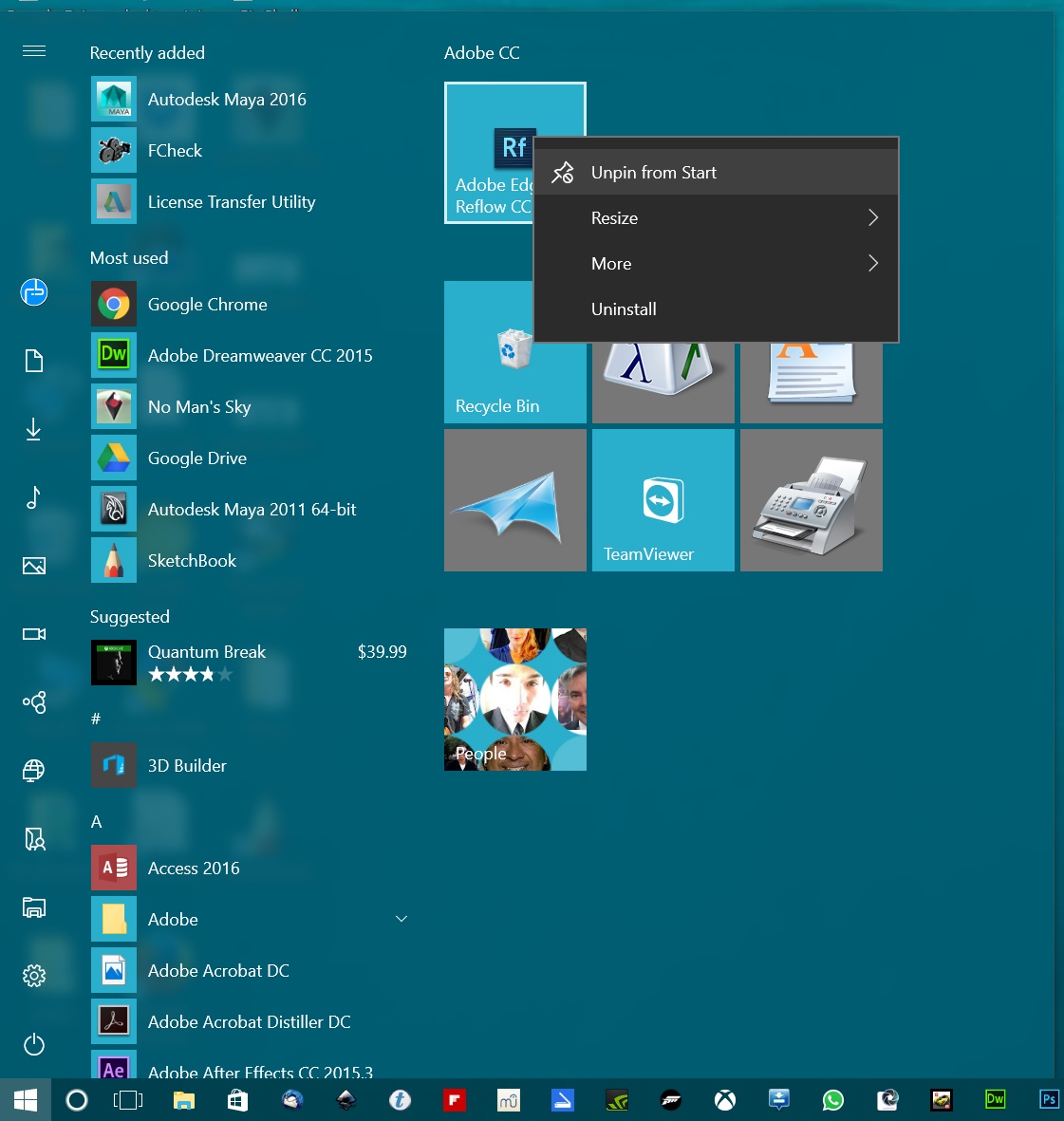
- #Customize windows 10 start menu task sequence how to
- #Customize windows 10 start menu task sequence install
- #Customize windows 10 start menu task sequence software
Here is my sample LayoutModification.json that can be used for testing. Teams cannot be pinned as it isn’t installed for all users and not installed when the user logs on.If we add one of these apps in our Layoutmodification.json they will not move but they will take up one of the items that we can pin in the file.Word, Excel, PowerPoint are automatically pinned if installed.Those two image files that you select, will replace two of the files here: C:\Windows\Web\Screen. When we have tested this is what we have observed so far: LockScreen Method 2, sets the lock screen you want, but still allows users to change lock screen image in settings.

If we look at the Start Menu this is what the apps we place in the different sections ends up. The really cool part is that the Start menu moves as soon as you set the registry value as shown below. In this article I wil explain how windows 10 Start Menu works, how can be changed, export the configuration and apply this configuration during the OSD task sequence. What can we do then? These are the rules of the LayoutModification.json. There are some useful registry keys that we can use to set the default location of the Start Button and hide Task View, Chat icon for example during OSD or AutoPilot for that matter using a PowerShell script. Windows 10 has a different way to customize Start Menu than Windows 7, it will involve power shell and xml file. More information can be found here: Customize the Windows 11 Start menu | Microsoft Docs Image: If the OS image package has multiple images, specify the index of the OS image to install. Image package: Specify the package that contains the OS image to install.For more information, see Manage OS images.
#Customize windows 10 start menu task sequence install
The functionality is a bit limited, but we can use it to pin apps per default during OSD. On the Install Windows page, specify the following settings. What can we do if we are not using Intune then? There is an option for OEMs to pin applications to the Start Menu by using a “LayoutModification.json” file. The Group Policy “Start Layout” can still be used to deploy a custom Taskbar layout, HOWEVER the end user can no longer pin apps to the Start Menu if it’s deployed to the client, more on that topic here: Modify Windows 11 Taskbar during OSD, Intune and GPO – CCMEXEC.COM – Enterprise Mobility We don’t have any “Partial” managed option either as we had in Windows 10. In the Configuration Manager administration console, click Asset and Compliance> Compliance Settings > Configuration Items> Create Configuration. In Intune we can use this for Win32App detection.Ĭ:\Windows\Sysnative\WindowsPowerShell\v1.0\powershell.exe -noprofile -executionpolicy bypass -file CustomizeTaskbar.In Windows 11 we can no longer deploy a custom Start Menu layout as we could in Windows 10. Registry value used for detection can be changed in the script. The script can be downloaded from GitHub here: PowerShell/Customize TaskBar and Start Windows 11 at master On the Home tab of the ribbon, in the Create group, select Create Task Sequence.
#Customize windows 10 start menu task sequence software
Powershell.exe -noprofile -executionpolicy bypass -file CustomizeTaskbar.ps1 -RemoveWidgets -StartMorePins –MoveStartLeft In the Configuration Manager console, Go to the Software Library workspace, expand Operating Systems, and select Task Sequences. – RunForExistingUsers = Modifies all existing profiles on the computer. – StartMoreRecommendations = Changes the default Start layout to More recommendations (22H2) If you do not wish to modify the Start Menu and. – StartMorePins = Changes the default Start layout to More pins (22H2) Setup a Windows 10 start menu as we would like to have as default. – RemoveSearch = Remove Search from the Taskbar – RemoveChat = Removes chat from the Taskbar Go to Software Library / Application Management / Packages.


– RemoveWidgets = Removes widgets from the Taskbar – RemoveTaskView = Remove Task View from the Taskbar The script can be used with the following variables: – Writes a registry value which can be used for detection in a Win32app, making it possible to install using Intune as well both as a script and Win32app. – Apply to all existing profiles on the computer – Set the default for More recommendations Taskbar and Start menu was introduced with this. The Taskbar could look like this: Sample left Start Menu The latest version of Microsoft Operating System which is being widely used across the world is Windows 10. Me and my colleague Sassan updated the script mentioned here to customize the taskbar with new features:
#Customize windows 10 start menu task sequence how to
I wrote a post on how to customize the layout using registry values: We get a lot of questions from end-users that they would like to have more pinned apps in the Start menu to make it easier to start them without clicking on more apps first. There is no builtin way to configure the default for the end-user with which Start Menu layout to use. For easy access to your favorite apps and most-used settings, heres how to customize the Start Menu in Windows 10 and Windows 11. In Windows 11 22H2 we have some great new options for the Start Menu layout which I really like, More Pins or More recommendations.


 0 kommentar(er)
0 kommentar(er)
